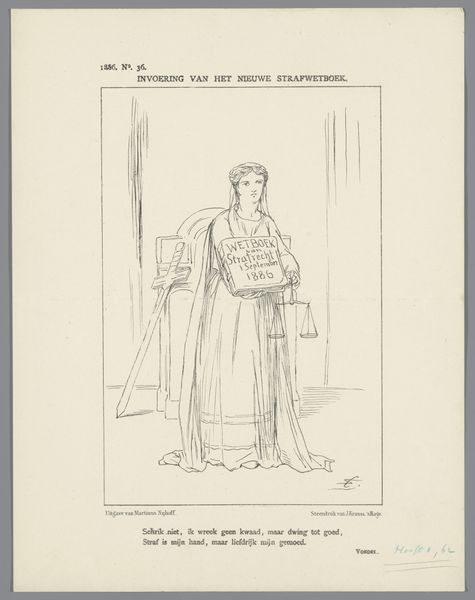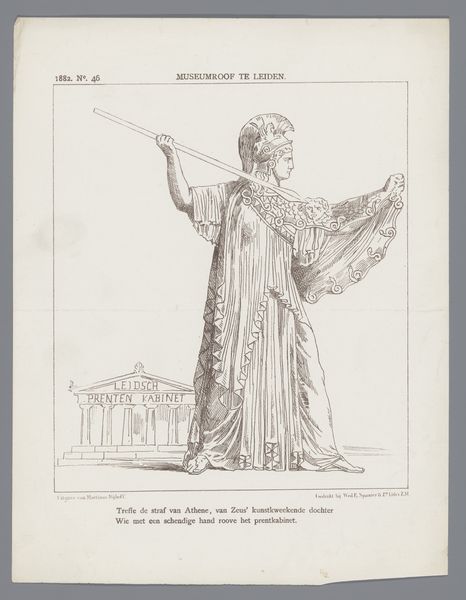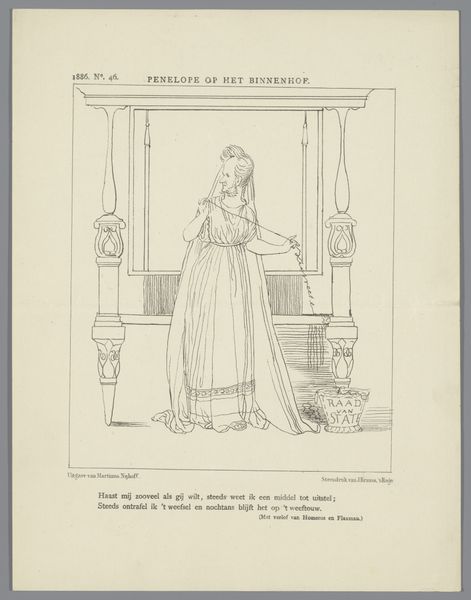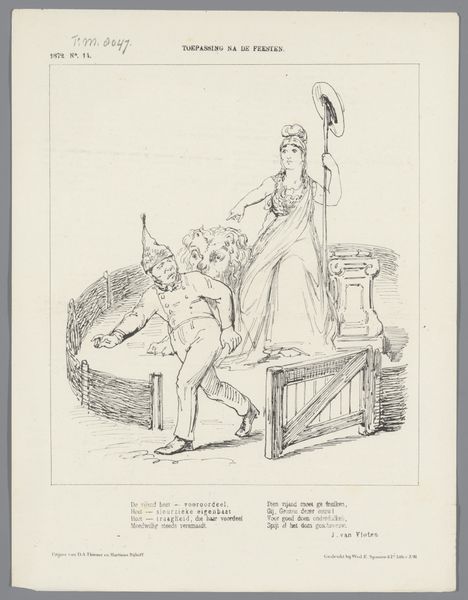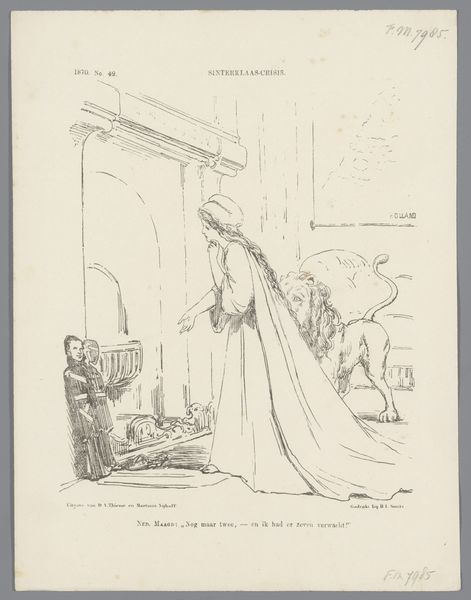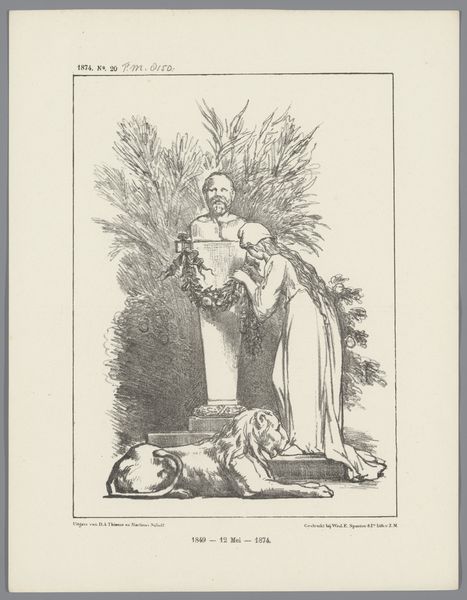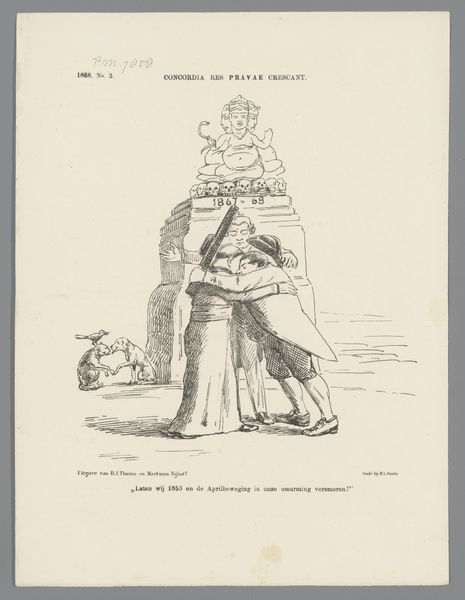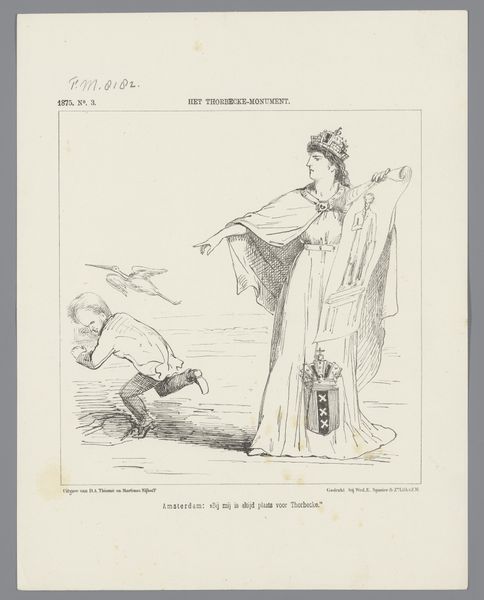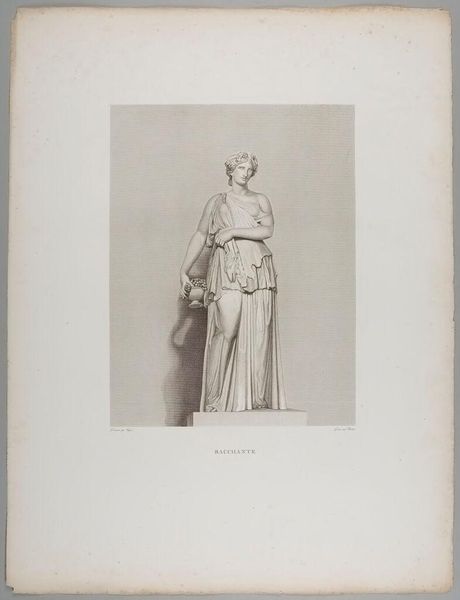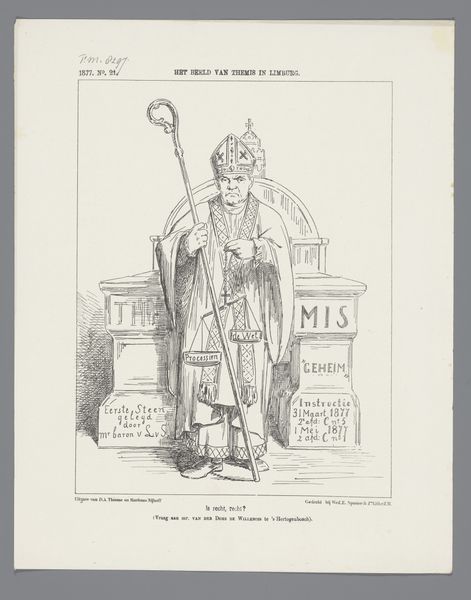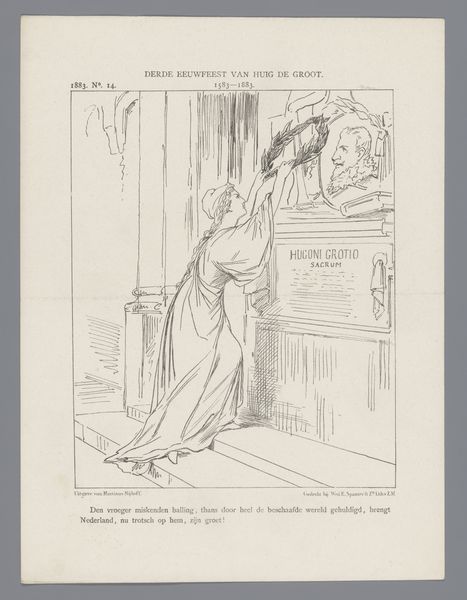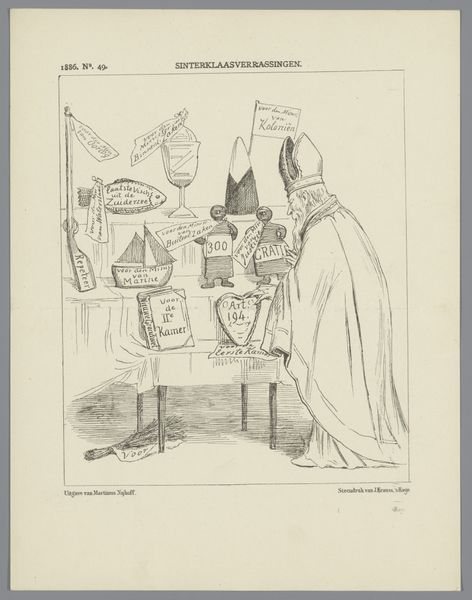
drawing, graphite, pen
#
portrait
#
drawing
#
comic strip sketch
#
pale palette
#
narrative-art
#
sketch book
#
personal journal design
#
figuration
#
personal sketchbook
#
idea generation sketch
#
sketchwork
#
line
#
graphite
#
sketchbook drawing
#
pen
#
genre-painting
#
storyboard and sketchbook work
#
academic-art
#
sketchbook art
#
realism
Dimensions: height 275 mm, width 215 mm
Copyright: Rijks Museum: Open Domain
Curator: Let's turn our attention to a piece called "Spotprent" created by Johan Michaël Schmidt Crans in 1877. Editor: Well, my initial impression is one of stillness. The muted palette and delicate lines create a quiet, almost melancholic mood. The figure seems to be contemplating something significant. Curator: It's fascinating how Schmidt Crans employs symbolism here. The seated figure, likely a statesman, wears what seems to be headgear suggesting civic office. The drawing style suggests realism. However, look closely at what that implies alongside that church structure rising stoically in the background. Consider the tensions it represents at this specific moment in history. Editor: Absolutely. And from a formal perspective, the contrast between the smooth lines defining the figure and the more frenetic hatching used for the building creates a visual tension, almost a sense of unease. Curator: I find the composition very intriguing. There's an immediate association between this important character, "Fabius Cunctator," an epithet given this person as if he embodied it. Fabius was a historical Roman leader. The symbolic placement of a real civic leader close to church structure makes this character an everyman caught between worlds, I think. Editor: I agree. Also, the economy of line is remarkable. Each stroke seems deliberate, contributing to both the representational and expressive qualities of the drawing. Look how the barest line sketches for windows and edges create whole buildings. Curator: The artwork serves as a commentary of Dutch society at this point, a commentary that remains powerfully relevant even now. The enduring questions surrounding cultural norms, political figures, and civic participation really do persist through time. Editor: It’s interesting to observe how artistic representation and material reality meet. Through just line, shape, and suggestion, Crans crafts a work full of symbolic value and emotive effect. Curator: Indeed, it reminds us how visual elements can act as vehicles, preserving and transmitting cultural memory across generations. Editor: For me, it confirms how potent minimalism can be in artmaking.
Comments
No comments
Be the first to comment and join the conversation on the ultimate creative platform.
